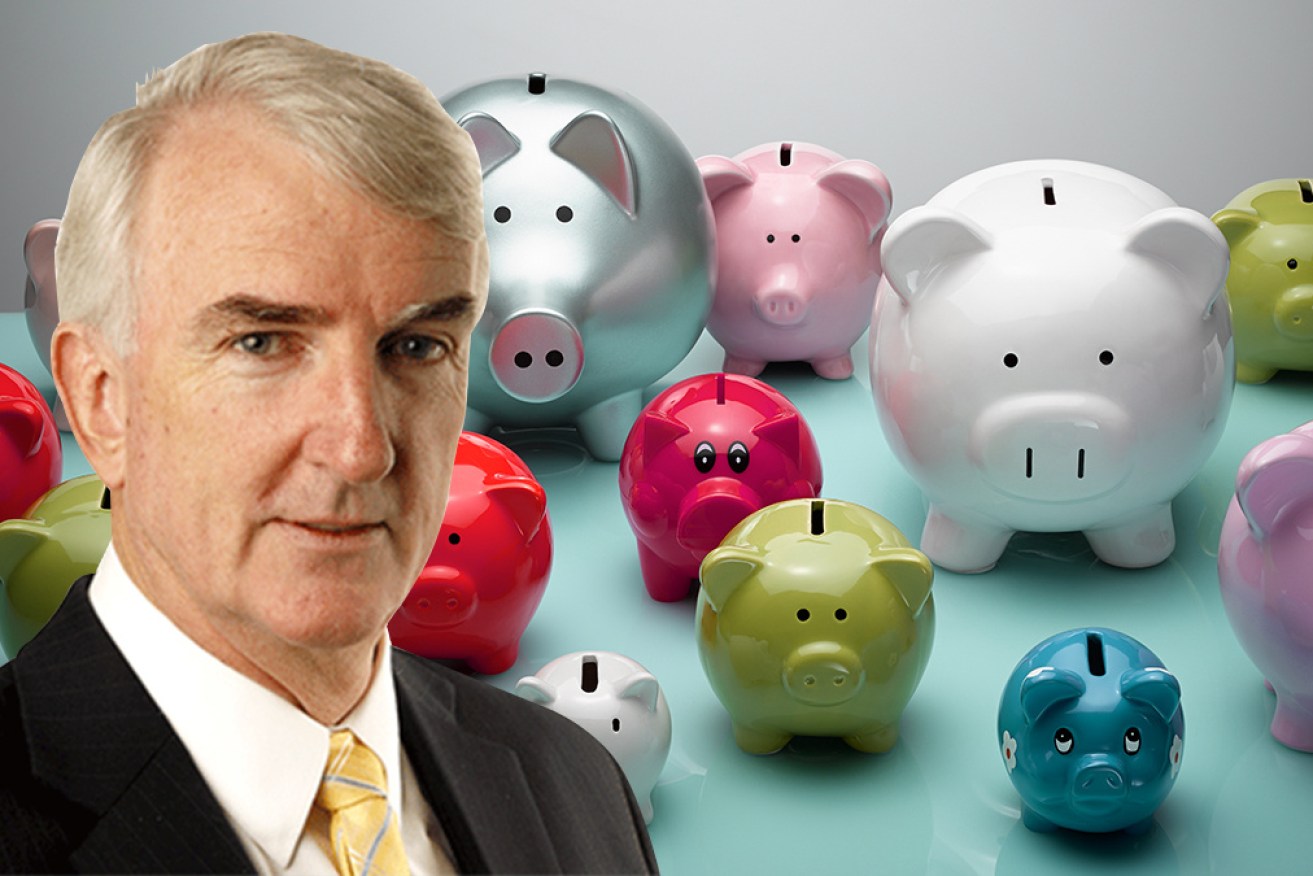Michael Pascoe: Superannuation’s enemies trumpet (failed) Treasury forecasting


Forecasting wages growth has never been the strong suit of Treasury or the RBA, Michael Pascoe says. Photo: The New Daily
When it comes to forecasting wages growth, all the king’s horses and all the king’s men of Treasury and the Reserve Bank combined are less accurate than pinning a range of possibilities on a chocolate wheel and giving it a spin.
It’s likely the chocolate wheel would have got it right once in a while over the past decade. Treasury never has.
And there’s no reason to think they suddenly will.
Like understanding why businesses investment has been so weak, it is very hard to know.
There are vastly more spinning parts in the real world that can be anticipated by the Commodore 64 whirring away on economic models in a Langton Crescent basement.
Which is why you’d have to be fairly desperate to push the Treasury secretary into the dark alley of wages forecasting for the sake of a few tenths of a per cent of dubious chook entrail reading.
But that’s what Senate estimates ended up doing on Tuesday.

Treasury secretary Dr Steven Kennedy at Senate estimates on Tuesday. Photo: AAP
Treasury Secretary Steven Kennedy gave estimates a considered opening statement on our economic situation, including 533 words on the outlook for wages and prices.
Running through some of those many spinning parts, he concluded “the speed with which prices and wages respond to reducing slack in the economy remains a key source of uncertainty”.
Fair enough.
But Senator Andrew Bragg – not a fan of increasing superannuation – wanted to know what impact Dr Kennedy thought increasing the super guarantee levy would have on wages growth.
Like RBA Governor Philip Lowe before another parliamentary committee, when pushed, Dr Kennedy went with the theoretical economic modelling that finds, all things being equal in an otherwise stable universe, that wage increases would be lower if the SGL is increased.
Treasury Secretary Dr Kennedy has told @AuSenate Estimates the Super Guarantee rise removes positive wages growth for workers throughout the forward estimates.
— Senator Andrew Bragg (@ajamesbragg) June 1, 2021
Never mind that the lived experience of Australians is that real wages rose nicely when the SGL was rising and real wages have stagnated – or worse – in the period without any SGL increase.
As previously reported here, the “Super War” isn’t as simple as the main protagonists like to pretend.
For some people, mainly contractors and those in management roles, super is just part of the total package. Super goes up, cash goes down on the next contract.
For many other people, mainly those on awards, super is in addition to wages.
In the real world of closed international borders and a surging domestic economy, workers in areas with skills shortages should be able to expect real wage rises regardless of what’s happening to the SGL.
For workers in parts of the economy not enjoying skills shortages, wage increases are likely to be zero or minimal with or without SGL increases.
Dr Kennedy doesn’t know what impact the SGL increases will have. He can’t know. He has to have a guess based on theoretical models rather than what’s happening in the real world. Such Treasury guesses have been totally wrong for years.
The theoretical modelling is of the same standard that claims workers will get wonderful wage rises if the government cuts corporate tax rates – always good for a laugh.
More important than Treasury’s theoretical belief that a 0.5 per cent increase in the SGL reduces wages by 0.4 per cent (when it occurs in a vacuum) are the “three key factors” in nominal wages growth Dr Kennedy identified in his opening statement.
The first, most obviously, is the “amount of labour market slack”. Supply and demand and all that – something Treasury effectively admitted it didn’t understand very well when it had to admit just before the budget that its NAIRU (non-accelerating inflation rate of unemployment) guess had been wrong for the past five years or so.
Treasury has been behind the RBA in this discovery and remains on the high side, pitching a NAIRU of between 4.5 to 5 per cent.
Dr Kennedy’s second factor is more interesting: Inflation expectations. When workers think inflation will be low, they accept low wage rises.
Again reverting to the real world, there’s more to it than that. With workers having lost bargaining power, it’s not just a matter of their expectations but employers’ decisions to only grant wage rises of the CPI or worse. It’s employers’ CPI expectations as much as employees’ that have helped stagnate real wages and send real take-home wages backwards.
Dr Kennedy’s third factor is productivity growth.
“An increase in productivity increases the value of labour, which raises wages,” he said.
Again, that’s the theory but only part of the practice.
There are a lot of legs to the study, which highlights the rise over the past 25 years of corporations with annual revenue of more than $US1 billion.
“Among the key changes: Capital income has grown while labour income and supplier payments declined,” the authors wrote.
Payments by the mega corporations to their suppliers fell by 4 per cent, but it was steeper for small and mid-size suppliers – they were down by 10 per cent.
But the headline figure was that while productivity gained by 25 per cent in real terms, wages grew by only 11 per cent.
“Gains from labour productivity went predominantly to capital income,” finds the McKinsey team – and it’s not the first to do so.
It’s all very well to chant that productivity increases increase wages, but the real world has changed.
Unfortunately it’s in the nature of economic models that they are based on how the world used to be – in theory.








